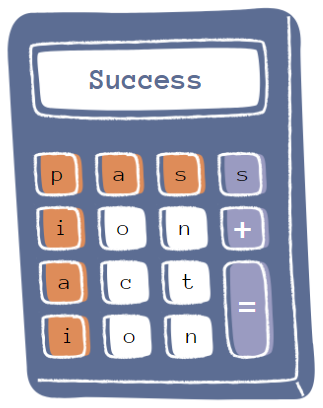Debt-Free Living: Strategies to Pay Off Debt Quickly
Introduction 
Debt can be a significant burden, impacting your financial stability and peace of mind. In India, many individuals struggle with various types of debt, including credit card debt, personal loans, and home loans. However, with disciplined strategies and effective planning, it is possible to pay off debt quickly and achieve debt-free living. This article outlines practical strategies to eliminate debt and provides tips for maintaining a debt-free lifestyle.
Understanding Debt and Its Impact
Debt is the amount of money borrowed from lenders that needs to be repaid with interest. While some debt, like home loans, can be considered good debt due to asset creation, other forms, such as high-interest credit card debt, can be detrimental to financial health. Debt impacts your ability to save, invest, and achieve financial goals.
Strategies to Pay Off Debt Quickly
1. Create a Debt Repayment Plan
Overview: A structured debt repayment plan helps you prioritize and systematically pay off your debts.
How to Start:
- List Debts: Make a comprehensive list of all your debts, including the outstanding amounts, interest rates, and minimum payments.
- Prioritize Debts: Focus on paying off high-interest debts first to minimize interest payments.
- Set a Timeline: Establish a realistic timeline for paying off each debt.
2. Follow the Debt Snowball Method
Overview: The debt snowball method involves paying off smaller debts first to build momentum and motivation.
How to Start:
- Pay Minimums: Continue making minimum payments on all debts.
- Target Smallest Debt: Allocate extra funds towards the smallest debt until it’s paid off.
- Move to Next: Once the smallest debt is paid, move on to the next smallest, and so on.
3. Implement the Debt Avalanche Method
Overview: The debt avalanche method focuses on paying off debts with the highest interest rates first, reducing overall interest payments.
How to Start:
- Pay Minimums: Continue making minimum payments on all debts.
- Target High-Interest Debt: Allocate extra funds towards the debt with the highest interest rate until it’s paid off.
- Move to Next: Once the highest interest debt is paid, move on to the next highest, and so on.
4. Consolidate Debts
Overview: Debt consolidation involves combining multiple debts into a single loan with a lower interest rate, simplifying repayment.
How to Start:
- Choose a Loan: Look for a personal loan or balance transfer option with a lower interest rate.
- Repay Debts: Use the loan to pay off multiple debts.
- Single Payment: Make a single monthly payment towards the consolidation loan.
5. Increase Income
Overview: Increasing your income provides additional funds to pay off debt more quickly.
How to Start:
- Side Hustles: Take on part-time jobs or freelance work to boost your income.
- Sell Unused Items: Sell unused or unwanted items online or through garage sales.
- Monetize Skills: Offer skills or services, such as tutoring, consulting, or crafts, for extra income.
Tips for Maintaining a Debt-Free Lifestyle
1. Create and Stick to a Budget
Overview: A budget helps you manage your finances, control spending, and ensure you live within your means.
How to Start:
- Track Expenses: Record all income and expenses to understand your spending habits.
- Set Limits: Allocate specific amounts for various categories, such as food, utilities, and entertainment.
- Adjust as Needed: Review and adjust your budget regularly to accommodate changes in income or expenses.
2. Build an Emergency Fund
Overview: An emergency fund provides a financial cushion for unexpected expenses, preventing you from accumulating new debt.
How to Start:
- Set a Goal: Aim to save at least 3-6 months’ worth of living expenses.
- Automate Savings: Set up automatic transfers to a dedicated savings account.
- Use Wisely: Only use the emergency fund for genuine emergencies.
3. Avoid Unnecessary Credit
Overview: Limiting the use of credit cards and loans prevents the accumulation of new debt.
How to Start:
- Use Cash or Debit: Prefer cash or debit cards for everyday purchases.
- Limit Credit Cards: Keep only one or two credit cards and use them responsibly.
- Pay in Full: Always pay off your credit card balance in full each month to avoid interest charges.
4. Plan for Major Expenses
Overview: Planning and saving for major expenses helps avoid borrowing and accumulating debt.
How to Start:
- Set Savings Goals: Identify upcoming major expenses, such as home renovations, vacations, or medical costs, and set savings goals.
- Allocate Funds: Regularly allocate funds towards these goals.
- Avoid Impulse Purchases: Stick to your savings plan and avoid impulse purchases that can derail your financial goals.
5. Seek Professional Help
Overview: Financial advisors or debt counselors can provide expert advice and strategies for managing and paying off debt.
How to Start:
- Research Advisors: Look for certified financial advisors or reputable debt counseling services.
- Consultation: Schedule a consultation to discuss your financial situation and develop a personalized debt repayment plan.
- Follow Guidance: Implement the strategies and advice provided to achieve your debt-free goals.
Practical Examples of Debt Repayment Strategies in India
1. Credit Card Debt Repayment
Scenario: An individual has accumulated INR 1 lakh in credit card debt with a high interest rate.
Execution:
- Debt Avalanche Method: Prioritize paying off the credit card debt first by allocating extra funds towards it while making minimum payments on other debts.
- Consolidation: Consider a personal loan with a lower interest rate to consolidate the credit card debt, reducing interest payments and simplifying repayment.
2. Home Loan Prepayment
Scenario: A family has a home loan with an outstanding balance of INR 30 lakhs and wants to pay it off quickly.
Execution:
- Increase EMIs: Increase the monthly EMI payments to reduce the principal amount faster.
- Lump Sum Payments: Make periodic lump sum payments whenever there are surplus funds, such as bonuses or tax refunds, to reduce the loan tenure and interest burden.
Conclusion
Achieving debt-free living is a realistic and attainable goal with the right strategies and discipline. By creating a debt repayment plan, using methods like the debt snowball or avalanche, consolidating debts, increasing income, and maintaining good financial habits, you can pay off debt quickly and enjoy financial freedom. In the Indian context, where debt can be a significant concern, these strategies and tips provide a roadmap to a debt-free and financially secure future.

